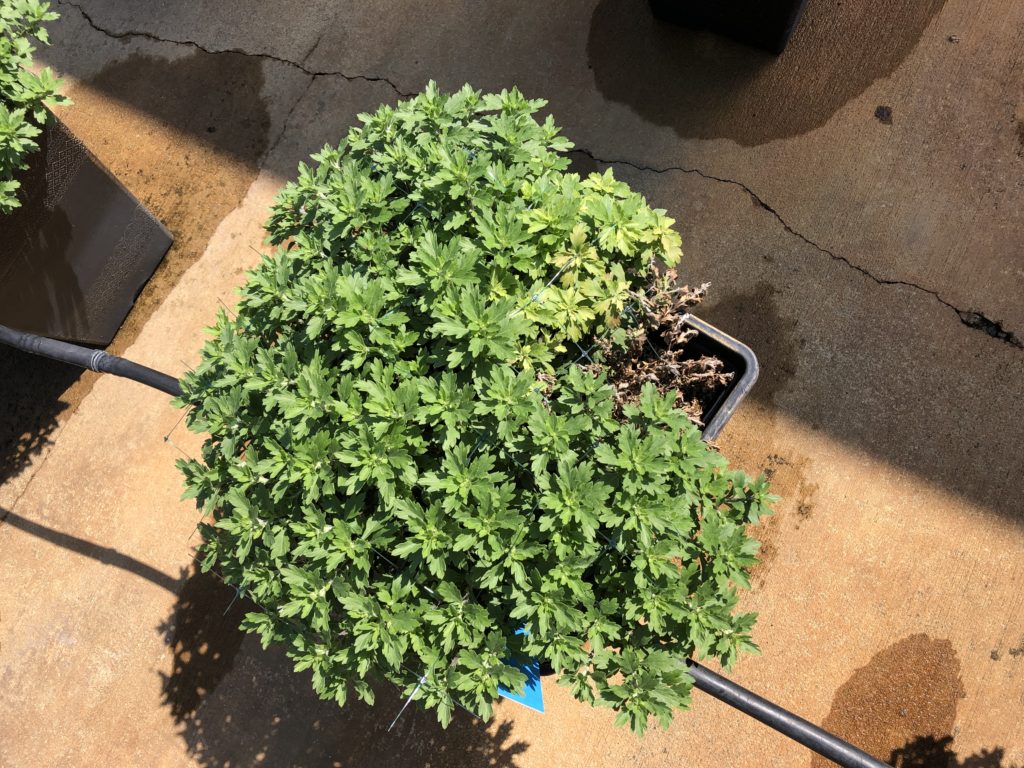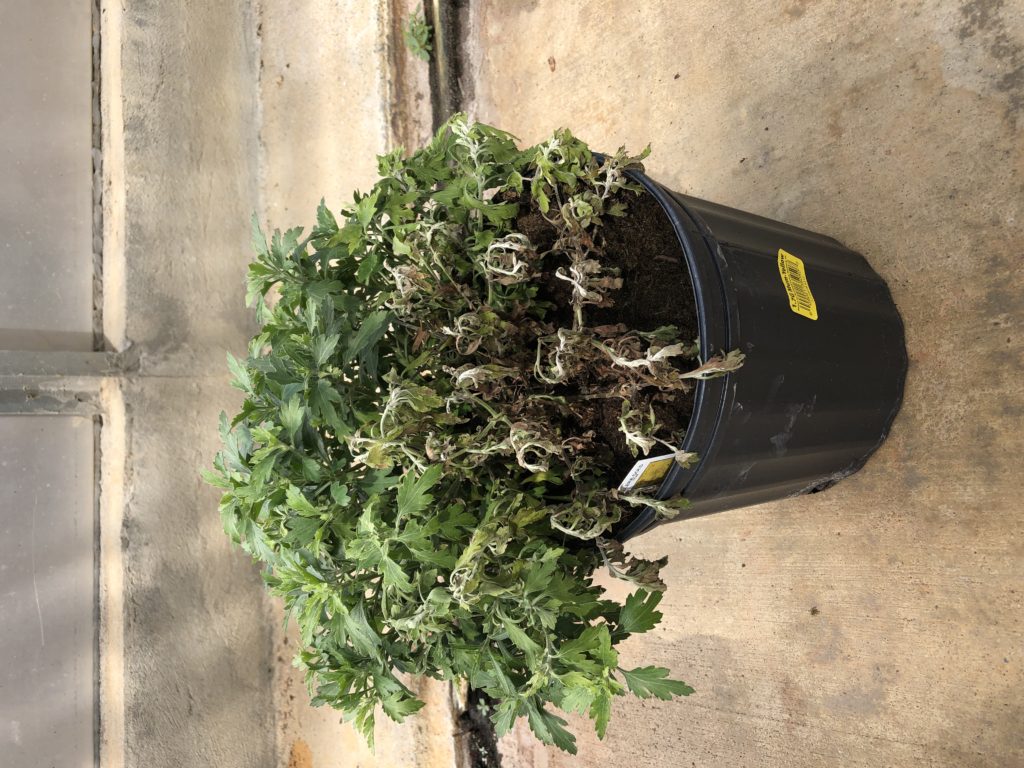Fusarium Wilt Problematic on Chrysanthemum in 2020
go.ncsu.edu/readext?732273
en Español / em Português
El inglés es el idioma de control de esta página. En la medida en que haya algún conflicto entre la traducción al inglés y la traducción, el inglés prevalece.
Al hacer clic en el enlace de traducción se activa un servicio de traducción gratuito para convertir la página al español. Al igual que con cualquier traducción por Internet, la conversión no es sensible al contexto y puede que no traduzca el texto en su significado original. NC State Extension no garantiza la exactitud del texto traducido. Por favor, tenga en cuenta que algunas aplicaciones y/o servicios pueden no funcionar como se espera cuando se traducen.
Português
Inglês é o idioma de controle desta página. Na medida que haja algum conflito entre o texto original em Inglês e a tradução, o Inglês prevalece.
Ao clicar no link de tradução, um serviço gratuito de tradução será ativado para converter a página para o Português. Como em qualquer tradução pela internet, a conversão não é sensivel ao contexto e pode não ocorrer a tradução para o significado orginal. O serviço de Extensão da Carolina do Norte (NC State Extension) não garante a exatidão do texto traduzido. Por favor, observe que algumas funções ou serviços podem não funcionar como esperado após a tradução.
English
English is the controlling language of this page. To the extent there is any conflict between the English text and the translation, English controls.
Clicking on the translation link activates a free translation service to convert the page to Spanish. As with any Internet translation, the conversion is not context-sensitive and may not translate the text to its original meaning. NC State Extension does not guarantee the accuracy of the translated text. Please note that some applications and/or services may not function as expected when translated.
Collapse ▲The number of chrysanthemum samples diagnosed with Fusarium wilt this year is well above average, according to NC State University Plant Disease and Insect Clinic records. The cause of this increase is unknown, but it highlights the importance of frequent scouting and sanitation for growers.
Fusarium wilt of chrysanthemum is caused by the soil-borne fungi Fusarium oxysporum f. sp. chrysanthemi and F. oxysporum f. sp. tracheiphilum. The fungi produce microscopic structures that can survive for years in soil or crop debris. The fungi enter their host plant through the roots and colonize the vascular tissue up into the stem.
Symptoms typical of Fusarium wilt on chrysanthemum often include uneven wilting, where one shoot or one part of the plant wilts while the remainder of the plant appears healthy. Wilting of entire plants can also occur.
Fusarium oxysporum can be introduced into greenhouses and nurseries via infected propagative material. The material can appear to be healthy at the time of planting, and weeks or even months may pass before symptoms develop. Rouging unhealthy propagation material is the first step in avoiding this disease, but is a challenge because of this latency.
Sanitation practices such as using clean pots and potting media, disposing of infested crop material, potting media, and pots, and sanitizing the planting area between crops also help to minimize the impact of this disease.
For more information on this disease, Ann Chase has an article in Greenhouse Magazine. For fungicide recommendations to manage this disease, see the NC Agricultural Chemicals Manual (refer to the Fusarium root and crown rot section of Table 10-11). Products such as Heritage (azoxystrobin), Compass (trifloxystrobin), Hurricane (fludioxonil+mefenoxam), Insignia (pyraclostrobin), Tourney (metconazole) and Trinity (triticonazole) have shown some efficacy, although results can be inconsistent.
If you suspect Fusarium wilt of chrysanthemum, contact your local Cooperative Extension agent or submit directly to the NC State University Plant Disease and Insect Clinic.




